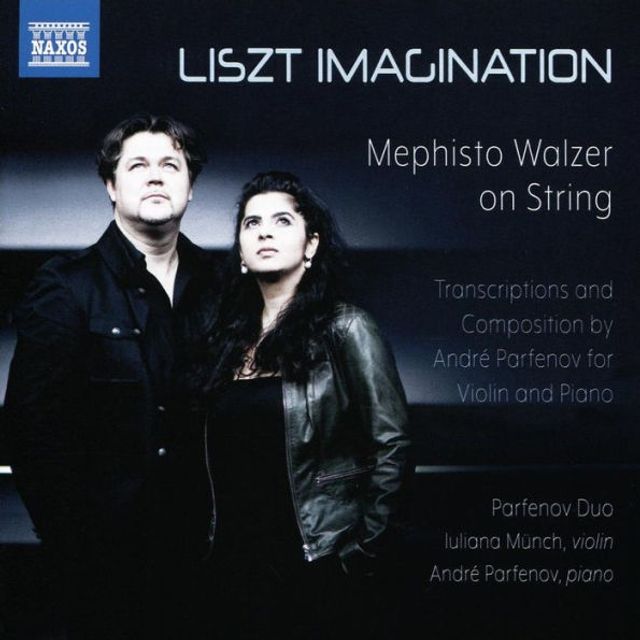Home
Liszt: Faust-Symphony; Mephisto Waltz No. 1
Loading Inventory...
Barnes and Noble
Liszt: Faust-Symphony; Mephisto Waltz No. 1
Current price: $23.99


Barnes and Noble
Liszt: Faust-Symphony; Mephisto Waltz No. 1
Current price: $23.99
Loading Inventory...
Size: OS
*Product Information may vary - to confirm product availability, pricing, and additional information please contact Barnes and Noble
Liszt
's
Faust Symphony
has been recorded many times, but several characteristics make this 2024 reading by the
Orchestre Philharmonique Royal de Liège
stand out. One is that conductor
Gergely Madaras
performs the work's original 1854 version.
struggled with the Faust legend both during this symphony's composition and afterward, revising it several times and adding a "chorus mysticus" finale that is usually performed with the work. Perhaps this corresponds well to the more philosophical passages of
Goethe
's original play, but there is a good case to be made that
was right the first time; the three movements, embodying Faust, Gretchen, and Mephistopheles, have a pleasing classical symmetry, especially inasmuch as some of the "Mephistopheles" finale is, in a way, sarcastically derived from the material laid out in the massive first movement. Heard this way, the symphony seems to be taking place in the mind of Faust himself, who, in this setting, also has a rather idealized version of Gretchen. "Gretchen" comes off especially well in
Madaras
' rather light, transparent reading of the score; this symphony can be a heavy slog, but in
' hands, the big "Faust" movement moves along well, and the "Gretchen" movement is positively graceful. The moderate-sized
Orchestre Philharmonique de Liège
must be close in size to the ones that played
's work originally, and in the hands of the engineers from the
BIS
label, it sounds great in its home hall, the Salle Philharmonique of Liège. This is a valuable entry in the reception history of a work that is crucial to the understanding of 19th century culture. ~ James Manheim
's
Faust Symphony
has been recorded many times, but several characteristics make this 2024 reading by the
Orchestre Philharmonique Royal de Liège
stand out. One is that conductor
Gergely Madaras
performs the work's original 1854 version.
struggled with the Faust legend both during this symphony's composition and afterward, revising it several times and adding a "chorus mysticus" finale that is usually performed with the work. Perhaps this corresponds well to the more philosophical passages of
Goethe
's original play, but there is a good case to be made that
was right the first time; the three movements, embodying Faust, Gretchen, and Mephistopheles, have a pleasing classical symmetry, especially inasmuch as some of the "Mephistopheles" finale is, in a way, sarcastically derived from the material laid out in the massive first movement. Heard this way, the symphony seems to be taking place in the mind of Faust himself, who, in this setting, also has a rather idealized version of Gretchen. "Gretchen" comes off especially well in
Madaras
' rather light, transparent reading of the score; this symphony can be a heavy slog, but in
' hands, the big "Faust" movement moves along well, and the "Gretchen" movement is positively graceful. The moderate-sized
Orchestre Philharmonique de Liège
must be close in size to the ones that played
's work originally, and in the hands of the engineers from the
BIS
label, it sounds great in its home hall, the Salle Philharmonique of Liège. This is a valuable entry in the reception history of a work that is crucial to the understanding of 19th century culture. ~ James Manheim


















